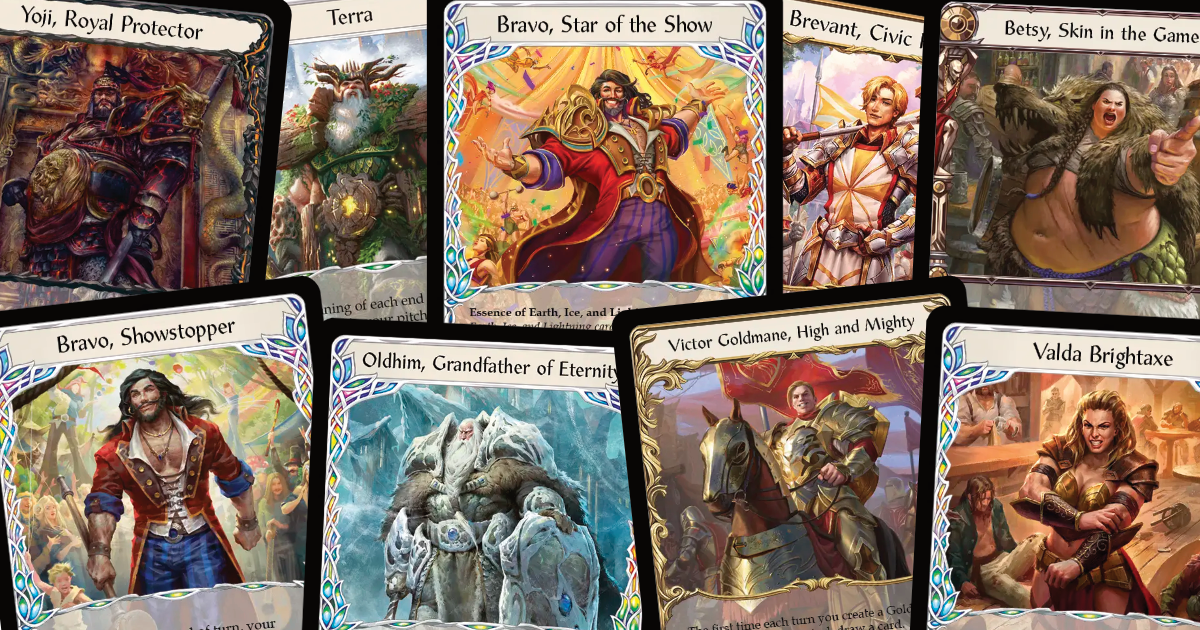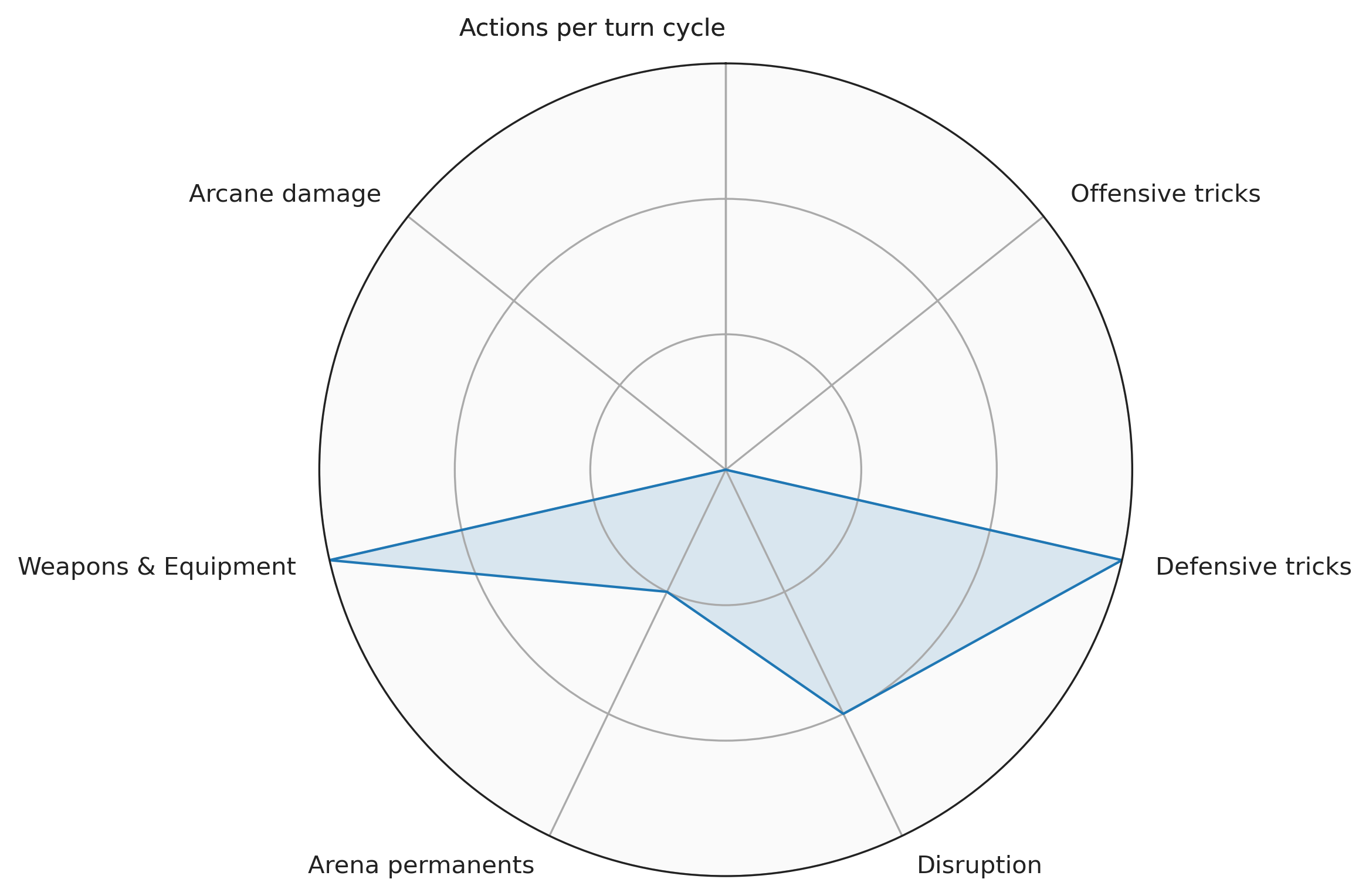ClassID - Guardian
Staunch protector or hedonistic strongwoman alike, Guardians will crush you if you are not ready for their heavy blows. As one of the original four classes from the first set, Welcome to Rathe, I believe Guardian is one of the best classes to learn the game with, simply because playing this class well requires a good grasp on the game’s fundamentals. It seems the developers at Legend Story Studios agree with me, considering they just released a new Guardian, Terra, in one of the First Strike beginner decks. Though Terra’s ability might not look like much, I think it captures the Guardian philosophy pretty well: put every resource to good use to make your attacks as threatening as possible. That’s right, Guardians love to throw big haymakers with devastating effects if they connect. But they are equally strong in the defensive department. If that sounds right up your alley, why not give the class a try now? That way you’ll be prepared for when Mastery Pack: Guardian comes out in early 2025!
Big, BIG haymakers
Though Crippling Crush is one of Bravo’s specializations, it is perhaps the most iconic Guardian card. Why? Because it tells you pretty much everything about a Guardian’s offensive capabilities. At a cost of 7, you either need to cheat on resources or commit the rest of your hand to throwing this single big attack. To meet these high resource costs, a large chunk of a Guardian’s deck is generally blue. But it is truly a big attack, considering there are currently only three other cards in the entire game with an equal or higher base power! Typically, a red attack action in Flesh and Blood is called on-rate if its attack equals its resource cost plus 4, meaning that this card is exactly on-rate, if it weren’t for its text box. Crush is a keyword that can be found on a lot of Guardian cards, and basically says that if your opponent doesn’t defend enough, you will disrupt their plans. This pairs well with big attacks of course because bigger attacks require more defense to prevent getting crushed. So, Guardians just throw big haymakers every turn?
Well, no. Since you only draw four cards every turn, and not every card generates the same amount of resources, you will not always be able to play out those big attacks as you draw them. Hence, Guardians rely on their arsenal quite a bit to stash away a powerful attack until the time is right to play it out for maximum effectiveness. In the meantime, they just defend. And quite well, I must add. Aside from most of their cards blocking for 3, Guardians have access to some big defence reactions as well, like Staunch Response and Shield Wall. Pair that with some of their damage-preventing instants, like Blessing of Serenity or Steadfast, and they can put up a nigh impenetrable defence.
Speaking of Shield Wall, its text mentions something about a Guardian off-hand? Yes! Guardian’s defensive capabilities stretch beyond the usual four armour slots into the weapon zones. Alongside a one-handed weapon, Guardians have quite a few shields to pick from, like the generally useful Rampart of the Ram’s Head, the Victor-specific Aurum Aegis, or the ice-infused Stalagmite! In their other hand, they are then often seen wielding their trusty Titan’s Fist, though there are other options like High Riser and the tantalising Miller’s Grindstone. These hammers all come in for a respectable 4 damage off of one blue pitch, so saying it is not uncommon for Guardians to block out and swing hammer is an understatement.
However, if you are inclined to play a more aggressive Guardian plan, may I introduce you to Pummel? With its cost of 2, it pairs extremely well with the variety of 4- and 7-cost Guardian attacks. If you have any card in hand or arsenal, and you pitch 2 or 3 blue cards to a 4- or 7-cost attack, your opponent always has to consider that your last card might be Pummel. Even worse for them, Pummel comes in all three colours, meaning you get to play a whopping 9 copies if you want. That is 15% of the minimum deck size! In these more aggressive plans, the hammer and shield are usually traded in for Anothos, a Pummel-able two-hander that boosts its own power once you pitch a second card to pay for Pummel. Value, even though you are missing out on the disruption. Guardians can also reliable play some generic cards like Zealous Belting and Rouse the Ancients to gain some access to go again, as this keyword doesn’t feature on Guardian attacks.
Finally, I have to mention auras. Guardians have a lot of auras, but historically, they have not seen much play. And it is not difficult to see why. Most of these auras, like the OG Emerging Power or the beautiful Towering Titan, allow you to carry over power from one turn to the next by bumping the numbers on your first Guardian attack action card next turn. The issue with this is that since most of your attacks are quite expensive, you need to be able to keep a large hand, leaving you open to a lot of disruption. This is not an issue into all decks, and therefore can be a lot of fun at the kitchen table, but in a tournament it increases your matchup variance, which is the opposite of what you want out of the otherwise consistent Guardian class.
Guardian’s radar chart
Now on to the radar chart, starting with the top half and going clockwise!
Okay, the first thing that stands out is that the radar chart lies entirely in the bottom half of the figure. That is because I have given Guardian a rating of 0 in Arcane damage, Actions per turn cycle, and Offensive tricks! The reason is simple though. The Guardian pool of class cards features no arcane damage, no go again or action point generation, and no attack reactions or offensive instants. Whilst they can’t find arcane damage in the Generic card pool, they do regularly shore up their class deficiencies with Zealous Belting/Rouse the Ancients and Pummel though, as discussed in the previous section.
- When it comes to defensive tricks on the other hand, this is the class to play. With a host of defense reactions and a bunch of defensive instants, as well as the blue density to consistently be able to play Unmovable, this class more than earns its 3/3 score in this category. Some Guardians even dedicate their whole deck to a “fatigue” plan, where they try to lose less cards on defence than their opponents do on offence, running them out of cards and leaving them helpless.
Now, when it comes to disruption, most of the Guardian attack actions feature the crush keyword and occasionaly on-hit effects, so they are definitely one of the more disruptive classes. However, their weapons and equipment don’t really play into this, which is keeping me from giving them a 3 in this aspect.
For arena permanents Guardians come in at a 1/3, despite the fact that their card pool features quite a few auras. This is because they are not widely played, and they only stick around for one turn, without affecting either side of the board before they pop. It is worth noting that their equipment also allows them to generate Seismic Surge and Might tokens regularly, but the same holds true for these token auras.
- Finally, I rate Guardian weapons and equipment a solid 3/3. They are the only class that gets 4-attack weapons for a single pitched card in a single weapon slot, leaving the other hand free for more defence in the form of a shield. Furthermore, they have access to at least one 2-value piece of equipment with Battleworn or Temper in each equipment slot, leaving them with a veritable “fridge”, as they say.
Who is the Guardian class for?
With a class so centered around defensive options, high number of blue cards in deck, and big, disruptive attacks, Guardian is one of the lowest variance classes in the game. If they can’t throw a haymaker, they can always defend and come back with a one-card hand for 4 damage (on rate!), and defend efficiently with their other cards. Therefore, this class is for players who like to get their opponent to lower life totals incrementally, with the occasional threat that their opponent simply can’t ignore.
If you enjoyed this article, why not tell your boss about it? They might treat you better if you have a card they need for their deck.

